Interviews with Experts
7 Must-Know Tips for Effective Tree Pruning
When it comes to effective tree pruning, it’s like giving your trees a well-deserved haircut to maintain their health and beauty. But, just like getting a haircut, some specific techniques and tips can make all the difference.
You might be surprised to learn that timing, tools, and even young tree care play crucial roles in the process. So, if you want to ensure that your trees thrive and flourish, these seven must-know tips will help you achieve just that.
Key Takeaways
- Prioritize safety by wearing appropriate protective gear and being aware of your surroundings.
- Maintain and sharpen pruning tools regularly for efficient and effective pruning.
- Prune trees during the dormant period in late winter or early spring for easier assessment and to minimize the risk of infection.
- Choose disease-resistant tree species and seek expert guidance to ensure healthy and thriving trees.
Safety Measures
When pruning trees, it’s essential to prioritize safety by wearing appropriate protective gear and using the proper tools to minimize the risk of accidents and injuries. Before starting any pruning work, ensure you have protective gear such as gloves, a helmet, safety goggles, and non-slip footwear. These will shield you from falling debris, sharp branches, and other potential hazards.
Additionally, inspect your tools to make sure they’re in good working condition. Sharp, well-maintained tools not only make the job easier but also reduce the risk of accidents. When using a chainsaw, always wear ear protection and a face shield to guard against wood chips and noise.
It’s crucial to assess the tree’s surroundings. Look out for power lines, structures, and bystanders. If the tree is near power lines, it’s best to call a professional.
Lastly, always have a first aid kit nearby in case of accidents. By following these safety measures, you can ensure that your tree pruning tasks are completed without any unnecessary risks or injuries.


Pruning Techniques
To effectively prune trees, it’s important to master various techniques that promote healthy growth and structural integrity.
The first technique to master is known as ‘crown cleaning,’ which involves the selective removal of dead, diseased, or weak branches from the canopy. This not only enhances the tree’s appearance but also reduces the risk of falling limbs.
Another essential technique is ‘crown thinning,’ which focuses on selectively removing branches to increase light penetration and air movement throughout the canopy. This helps to reduce wind resistance and the likelihood of storm damage.
‘Crown raising’ is a technique that involves the removal of lower branches to provide clearance for buildings, vehicles, and pedestrians. Additionally, ‘crown reduction’ is used to decrease the size of a tree, often to address clearance issues.
When executing these techniques, it’s crucial to make clean cuts just outside the branch collar to promote proper healing. Always use sharp, high-quality pruning tools, and consider consulting a certified arborist for complex pruning tasks.
Mastering these techniques will enable you to effectively promote the health and longevity of your trees while ensuring safety for your surroundings.
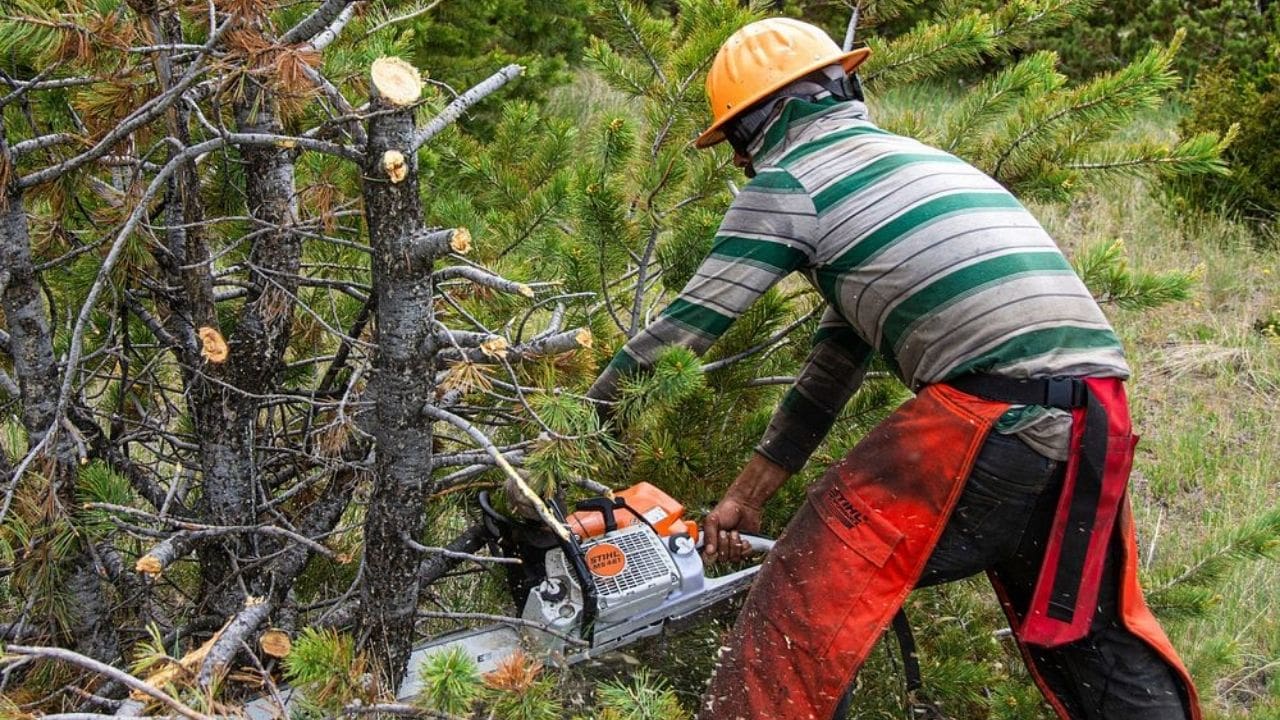

Best Season
The best season for tree pruning is typically during the dormant period in late winter or early spring before new growth begins. Pruning during this time offers several benefits.
First, without leaves, it’s easier to assess the tree’s structure and identify the areas that need attention.
Second, the wounds left by pruning have less chance of becoming infected by pests or diseases.
It’s important to note that while late winter to early spring is generally the ideal time for pruning, certain trees may have specific requirements.
For instance, trees that bloom in summer should be pruned immediately after they flower. On the other hand, trees that bloom in early spring should be pruned during their dormant season.
Additionally, it’s crucial to avoid pruning in the fall, as it can stimulate new growth that may not have enough time to harden before winter, making the tree more susceptible to cold damage.
Always prioritize safety when pruning, especially when working with larger trees or using tools at heights.
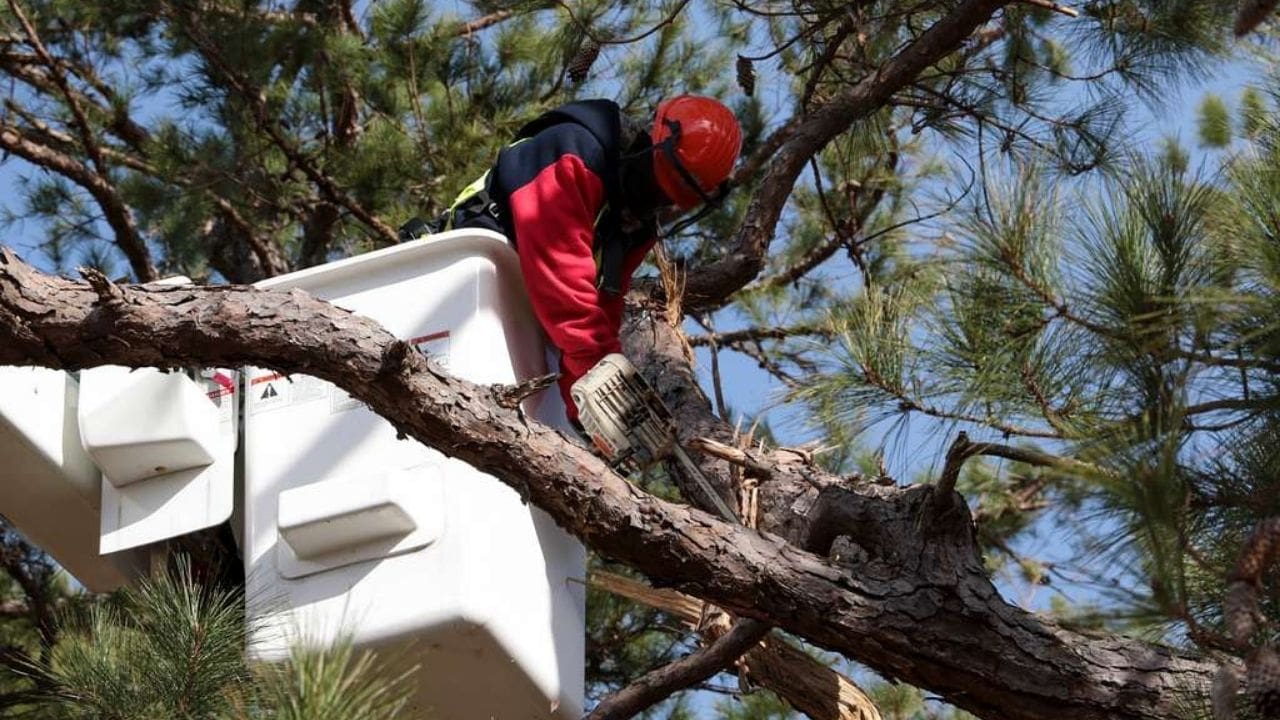

Tool Maintenance
It’s essential to maintain your pruning tools in top condition to ensure efficient and effective tree pruning.
Sharpening the cutting edges of your tools will result in cleaner cuts and reduce the risk of damage to the tree.
Regularly cleaning tool surfaces and lubricating moving parts will also prolong the life of your equipment and make pruning tasks easier.
Sharpening Pruning Tools
Consider regularly sharpening your pruning tools to ensure clean and efficient cuts, promoting the health and growth of your trees and plants. Dull blades can cause tearing and crushing of the plant tissue, leading to slow healing and an increased risk of disease.
Use a sharpening stone or file to maintain a sharp edge on your pruning shears, loppers, and saws. When sharpening, follow the original bevel of the blade and maintain a consistent angle. Test the sharpness by making a few cuts on a scrap piece of wood.
Remember to wear protective gloves and goggles when sharpening your tools. By keeping your pruning tools sharp, you’ll reduce the effort required to make cuts and minimize the stress on your plants, ultimately promoting their overall health and vitality.
Cleaning Tool Surfaces
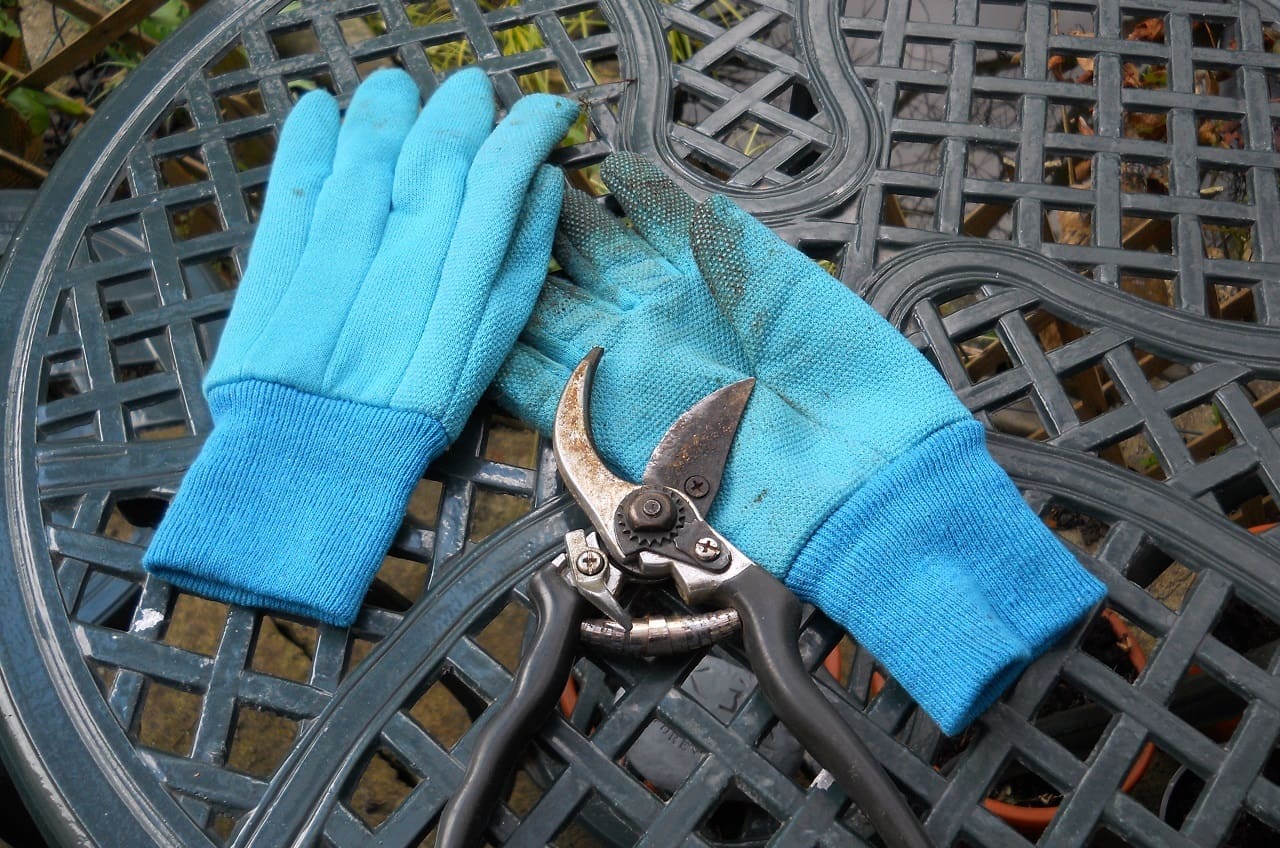

Regularly cleaning the surfaces of your pruning tools is essential for maintaining their effectiveness and prolonging their lifespan. When it comes to cleaning tool surfaces, there are a few key points to keep in mind:
- Remove Resin and Sap: Use a cloth soaked in mineral spirits to wipe off any resin or sap from the blades. This will prevent buildup that can hinder the cutting action of the tools.
- Prevent Rust: After cleaning, make sure to thoroughly dry the tools to prevent rust formation. Applying a light coat of oil can also help protect the metal surfaces.
- Disinfect: To prevent the spread of diseases between plants, disinfect the blades with a solution of 70% isopropyl alcohol after each use.
Lubricating Tool Parts
After cleaning the surfaces of your pruning tools, it’s important to ensure proper maintenance by lubricating the tool parts to keep them in optimal working condition.
Apply lubricant to the moving parts, such as the pivot point and the cutting blade, to reduce friction and wear. Use a high-quality lubricant specifically designed for garden tools. Be sure to follow the manufacturer’s recommendations for the type of lubricant to use and how frequently to apply it.
Regular lubrication not only extends the life of your tools but also ensures smooth and precise cutting, reducing the risk of accidents. Remember to wipe off any excess lubricant to prevent it from attracting dirt and debris, which can affect the tool’s performance.
Proper lubrication is essential for maintaining the safety and effectiveness of your pruning tools.
Young Tree Care
When caring for young trees, it’s essential to provide consistent and appropriate pruning to encourage healthy growth and structure. Proper care during the early stages of a tree’s life sets the foundation for its future development and longevity. Here are some important tips for effectively caring for young trees:
- Regular Inspection: Inspect young trees regularly for any signs of disease, pest infestation, or structural issues. Early detection allows for prompt intervention, preventing potential hazards and promoting the tree’s overall well-being.
- Pruning Techniques: Utilize appropriate pruning techniques to shape the tree and promote strong, well-spaced branches. This includes removing any dead or rubbing branches, as well as maintaining a central leader to encourage upward growth.
- Establishing Formative Pruning Schedule: Implement a formative pruning schedule to guide the tree’s growth. This involves strategic pruning during the early years to establish a desirable shape and structure, ensuring the tree develops in a balanced and healthy manner.
Disease Prevention
To ensure the health of your trees, it’s crucial to select disease-resistant species suitable for your climate and soil conditions.
When pruning, be mindful of proper techniques to minimize the risk of introducing infections.
Additionally, regularly sanitizing your pruning tools can prevent the spread of diseases between trees.
Disease-Resistant Tree Species
Choosing disease-resistant tree species is crucial for preventing the spread of infections and maintaining the health of your landscape. When selecting trees for your property, consider the following factors to ensure disease resistance:
- Local Adaptation: Choose tree species that are native to your area, as they’ve evolved to withstand local diseases and environmental conditions.
- Genetic Resistance: Look for tree varieties known for their genetic resistance to common diseases prevalent in your region.
- Disease History: Research the disease history of different tree species to determine which ones are less susceptible to infections in your specific area.
Proper Pruning Techniques
Maintaining the health of your landscape involves not only choosing disease-resistant tree species but also implementing proper pruning techniques to prevent the spread of infections.
When pruning, it’s crucial to use sharp, clean tools to make precise cuts. Begin by removing dead, diseased, or damaged branches, cutting at the branch collar without leaving stubs. This helps the tree heal properly and reduces the risk of infection.
Additionally, avoid over-pruning, as it can weaken the tree and make it more susceptible to diseases. Always sterilize your tools between cuts, especially when dealing with diseased trees, to prevent the spread of pathogens.
Sanitizing Pruning Tools
Sanitizing your pruning tools is essential for preventing the spread of diseases among your trees and promoting their overall health and vigor. Proper sanitation helps maintain the integrity of your trees, ensuring they remain strong and disease-free.
Here are some important tips for sanitizing your pruning tools:
- Clean Tools After Each Use: Use a solution of 1 part bleach to 9 parts water or rubbing alcohol to clean your pruning tools after each use.
- Disinfect Between Trees: It’s crucial to disinfect your tools by pruning different trees to prevent the spread of diseases from one tree to another.
- Inspect and Replace Worn Tools: Regularly inspect your pruning tools for wear and tear, and replace any damaged or worn-out parts to maintain their effectiveness.
Growth Promotion
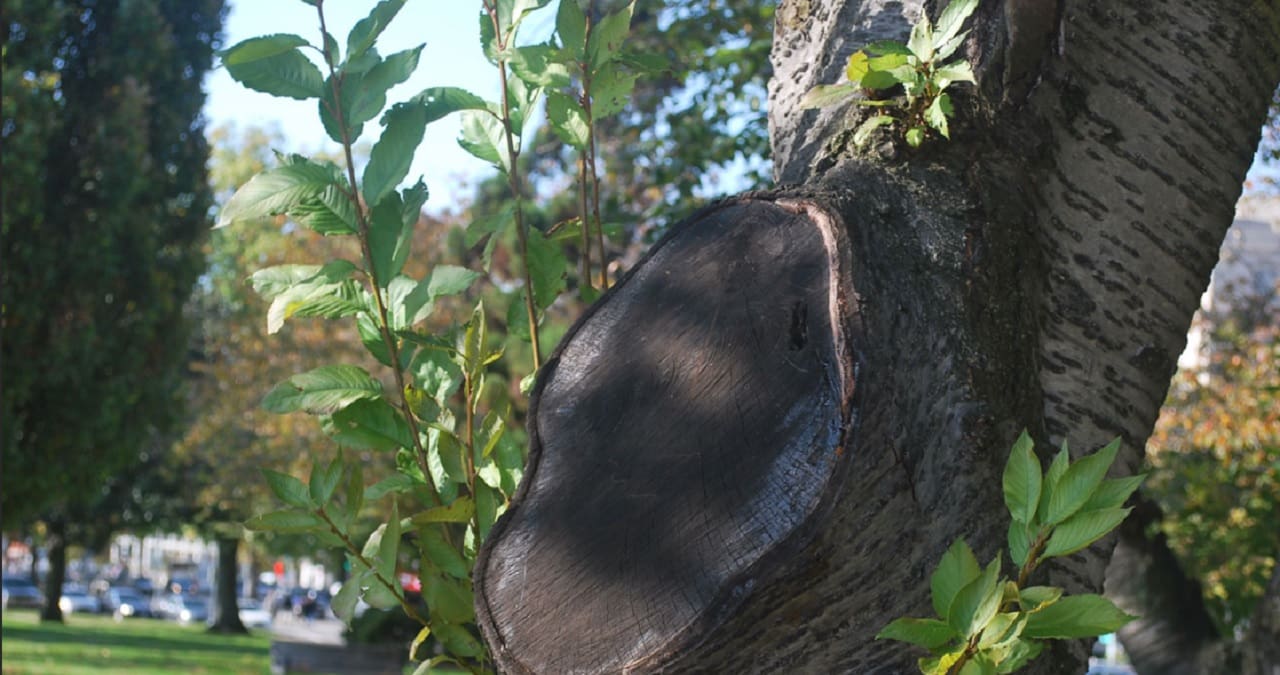

To encourage healthy growth and development in your trees, it’s essential to understand the principles of proper pruning techniques and timing.
One of the key strategies for growth promotion is to remove dead, damaged, or diseased branches. These can impede the overall health of the tree, diverting energy from new growth or serving as entry points for pests and diseases.
Additionally, selective thinning of the tree’s canopy can improve air circulation and sunlight penetration, stimulating new growth. When pruning for growth promotion, it’s crucial to make clean cuts to minimize stress on the tree. Always prune just outside the branch collar, without leaving a stub. This promotes efficient healing and reduces the risk of infection.
Furthermore, promoting a central leader in young trees can encourage strong, upright growth, while maintaining an appropriate tree shape.
Lastly, consider the timing of your pruning efforts; for most trees, late winter or early spring is ideal, as it allows for vigorous growth throughout the upcoming season.
Frequently Asked Questions
Can I Prune My Trees During the Winter Months?
Yes, you can prune your trees during the winter months. It’s a good time to shape and maintain their health. Just ensure that you avoid extremely cold days and monitor the tree’s response to the pruning.
How Can I Tell if a Tree Is Too Mature to Be Pruned Effectively?
You can tell if a tree is too mature to be pruned effectively by checking for signs of decay, disease, or structural weakness. If the tree shows these signs, it may be best to consult a professional arborist for advice.
Are There Any Specific Pruning Techniques for Fruit Trees That Differ From Other Types of Trees?
When pruning fruit trees, it’s important to consider their growth habits and fruit production. Techniques like thinning, heading, and spur pruning are specific to fruit trees, ensuring healthy growth and abundant harvests.
What Are Some Common Mistakes People Make When Pruning Their Trees?
When pruning trees, common mistakes include improper timing, cutting too much at once, neglecting to remove dead or diseased branches, and using dull tools. These errors can harm the tree’s health and lead to safety hazards.
What Should I Do if I Notice Signs of Disease on My Trees After Pruning?
If you notice signs of disease on your trees after pruning, promptly remove and dispose of any affected branches or debris. Disinfect your pruning tools, and consider consulting a professional arborist to assess and address the issue.
9 Essential Tips for Effective Tree Pruning: A Guide for Healthier, Stronger Trees
Enhance Your Sawing with Freud Diablo Carbide Pruning Blades
Equip your reciprocating saw with Freud DS0903CP3 Diablo 9 Carbide Pruning Reciprocating Blades to tackle your pruning jobs like a pro. This 3-pack offers exceptional longevity and cutting performance, easily chewing through wood and making tree trimming a less strenuous task. The carbide technology extends the blade life, ensuring that you can count on these blades for multiple seasons. Up your sawing game with blades that are built to last.
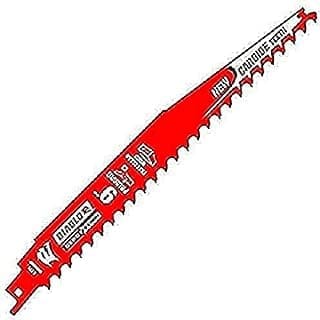

Change to Diablo Carbide Blades Now
Unleash the Power with Husqvarna Gas Chainsaw
Power through your garden maintenance tasks with the Husqvarna 450 Rancher Gas Chainsaw. This 502-cc, 3.2-HP, 2-cycle X-Torq engine offers unbeatable cutting performance, making it ideal for tree pruning, yard cleanups, and firewood cutting. The 18-inch chainsaw length coupled with an automatic oiler ensures smooth operation and longevity of the tool. Whether you have a small backyard or a sprawling estate, this chainsaw is designed to deliver both efficiency and reliability, providing professional-grade power that’s accessible to everyday users.
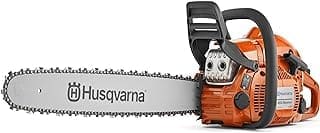

Get Professional Cutting Power
Cutting Edge Technology with Cordless Mini Chainsaw
Compact but mighty, the Mini Chainsaw 6-Inch Cordless is your go-to for handheld pruning efficiency. Lightweight and easily maneuverable, this electric battery-powered hand chainsaw is ideal for tree branches trimming and wood cutting. The 21V battery delivers enough power to meet your cutting needs, and with two batteries included, you won’t have to worry about running out of juice mid-task. This pruning solution is perfect for quick and clean cuts round the garden.
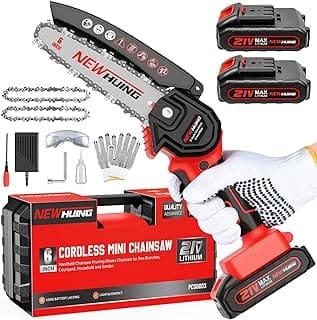

Discover the Power of a Cordless Mini Chainsaw
Efficient Plant Care with Fiskars Bypass Pruning Shears
Gardening becomes a joy with the Fiskars Bypass Pruning Shears. Known for their quality and ease of use, these pruning shears feature sharp, precision-ground steel blades ideal for quick snips and clean cuts. Crafted for comfort and efficiency, they’re perfect for a variety of garden tasks from shaping plants to harvesting flowers. Their durability ensures a solid performance for years to come, making them a staple tool for garden enthusiasts.
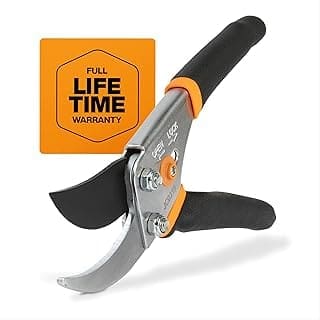

Achieve Garden Perfection with Fiskars
Fiskars Garden Bypass Lopper & Tree Trimmer – Sharp, Clean Cuts Every Time
Every gardener knows the importance of a reliable lopper. Fiskars 28 Inch Steel Blade Garden Bypass Lopper and Tree Trimmer is the companion you need for effortlessly cutting through branches up to 1.5 inches in diameter. The precision-ground steel blade provides not just sharpness for a clean cut, but also durability for a long-lasting tool. Its ergonomic design and easy-to-grip handles make pruning less of a chore and more of a pleasure. Turning your overgrown garden into a well-manicured oasis has never been simpler.
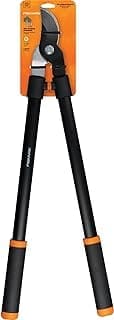

Heightened Efficiency with Spear & Jackson Telescopic Tree Pruner
Exceed your pruning expectations with the Spear & Jackson 4930FZ03 Razorsharp Telescopic Tree Pruner. This extendable tool allows you to reach higher branches effortlessly, ensuring that every cut is clean and precise. It’s built to last and designed for comfort, making it an indispensable tool for maintaining trees and large shrubs. Your pruning tasks just got easier with this premium telescopic pruner.
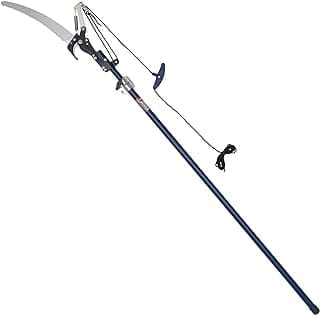

Elevate Your Pruning Game Today
Effortless Precision with Spear & Jackson Telescopic Tree Pruner
When it comes to maintaining your garden, the Spear & Jackson 4930FZ03 Razorsharp Telescopic Tree Pruner stands out for its ability to blend reach with precision. This pruner is particularly suited for those hard-to-reach branches, ensuring a clean cut without the need for a ladder. The telescopic feature allows for an extended range, making it a versatile tool for various pruning tasks around the yard. Not only does it maximize your safety by keeping you firmly on the ground, but it also ensures that each snip of the branches is as sharp as the last, thanks to its high-quality razorsharp blade.
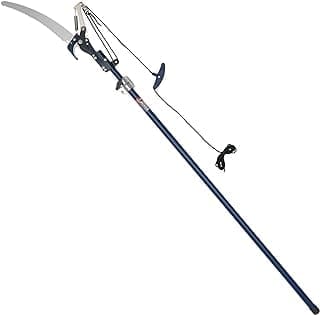

Shop Now for Precision Pruning
Portable and Powerful Mini Chainsaw for Various Cutting Needs
The Mini Chainsaw 6-INCH Electric Cordless Mini Chainsaw is your go-to tool for quick and efficient cutting. Including 2Pcs of 2000MAH rechargeable batteries, this small handheld portable chainsaw is perfect for pruning shears for tree branches, wood cutting, gardening, and camping. Not just limited to the backyard, its portable design means that you can take your DIY projects anywhere. It’s a superbly convenient tool that offers speed and maneuverability without sacrificing power.
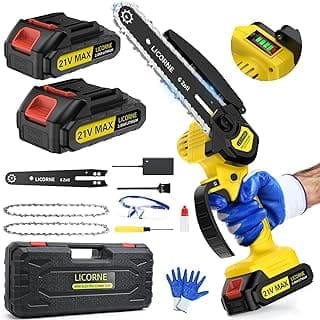

Grab This Handy Mini Chainsaw Now
Maximum Power with Fiskars PowerGear2 Bypass Lopper
Experience the next level of tree trimming with the Fiskars 32 PowerGear2 Bypass Lopper. Harness the leverage you need to cut through branches up to 2 inches in diameter with minimal effort. The PowerGear technology multiplies your cutting force, while the sharp precision-ground steel blade ensures a clean, flat cut every time. Enhance your garden maintenance with a tool that’s built for strength and designed for comfort.
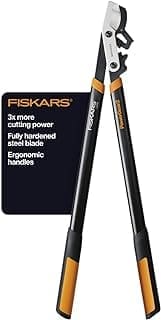

Cut with Ease Using Fiskars PowerGear2


Hello there! I’m Logan Foster, the green-thumbed social media marketer behind the vibrant world of 1800TreeGuy.com. With roots firmly planted in arboriculture, I’ve branched out to help clients cultivate their dream outdoor spaces, one leafy canopy at a time. My knack for nurturing nature is more than a profession—it’s a way of life.
When I’m not talking trees and teaching the art of arboreal care, you can find me cheering on the Bulldogs—my alma mater’s pride and my forever team. My environmental studies there didn’t just teach me about ecosystems; they instilled a lifelong passion for protecting our planet.
Off the clock, I’m an adventurer at heart. Whether it’s trekking the Appalachian trails, pedaling down a mountain path, or crafting guides to share the wonders of the wild, I’m happiest with soil under my nails and the sun on my face. And let’s not forget Yoda, my pug sidekick. He may not have mastered the art of stillness, but his joyful grins are my daily dose of happiness.
I’m all about making connections—between people and the great outdoors and between my clients and their ideal landscape visions. My approach is personal; every tree has a story, and every garden reflects its caretaker.
If you want to green your scene or share in my outdoor escapades, give me a shout on Instagram or Facebook. Let’s cultivate a conversation and grow a community rooted in a love for the lush life.







